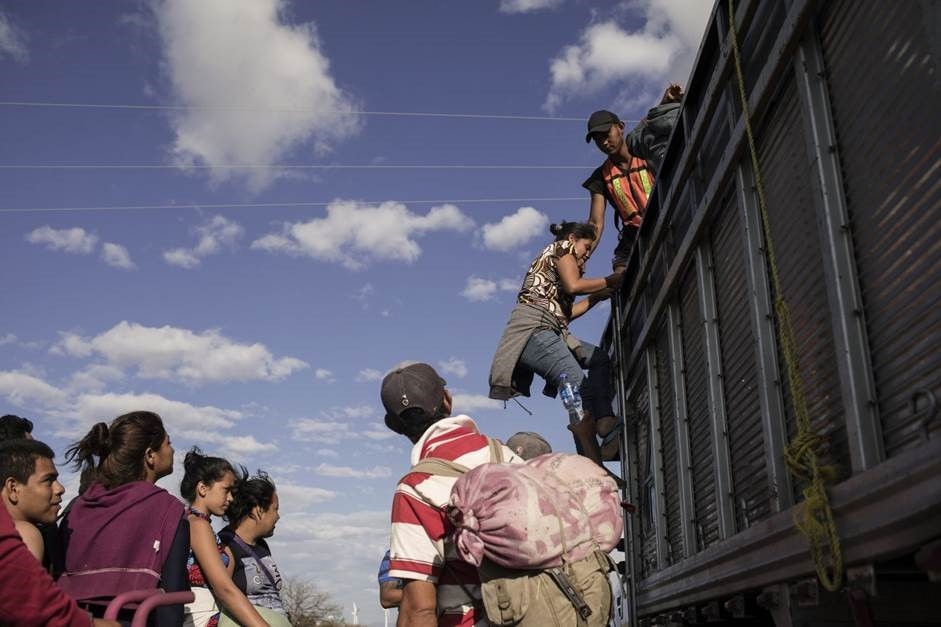UN and NGOs boost support to Central America amid migrant crisis

International organisations are increasing their support to the migration crisis in Central America and will support the ongoing efforts of local civil society groups.
The United Nations Refugee Agency, the International Organisation for Migration, and the International Committee of the Red Cross have all scaled up operations in Central America and explain further support is essential to cope with the growing crisis.
However, given the complex and fast-changing nature of the situation some international organisations are struggling to understand their role.Although homicide rates in the “Northern Triangle” have declined in the last year, the impact of widespread transnational organised crime have forced Guatemala, Honduras and El Salvador to consistently rank as the most violent countries in the world. According to the International Organisation for Migration (IOM), immigration routes in Central America and the Caribbean now account for 25% of the world's total immigration.
The high level of crime in some Central American countries has contributed to the large number of asylum applications from the Northern Triangle to the US. The number of people seeking asylum rose dramatically between 2011 and 2017 from 11,503 to 130,500. Of these only 39,300 achieved refugee status. According to Francesca Fontanini, UNICEF Mexico spokesperson, Mexico’s annual asylum application rate has doubled each year since 2015.
Marcelo Pisani, Director of the International Organisation for the Migration of Central America, North America and the Caribbean, said that before 2014, the organisation's focus in Central America was on trafficking. However, as growing numbers flee violence, donors are increasingly interested in supporting immigration.
Mr. Piasni said:
“The issue of migration is in the agenda now everywhere. I have been working with the IOM since 1999, and at that moment when I joined IOM, migration was on the table, but not as strong as it is now. Central America is one of the most dynamic migration corridors in the world. Because of the issue of migration becoming more relevant, we as IOM have to be also at the level that is required.”
The IOM is also increasing its focus on community stabilisation and assisting governments in resettling returned migrants. Pisani noted the difficulty of this as often migrants and vulnerable people remain invisible.
Similarly, UNHCR has opened four new offices in the North Triangle and southern Mexico over the past two years: two in Guatemala, one in Honduras and one in Mexico, with a total of nine offices in the region. Much of their work focuses on supporting local organisations in setting up immigration shelters along popular immigration routes.
UNHCR has also increased the level of assistance it is providing families in the region, most notably those who are seeking asylum. This reflects the growing number of children and families crossing the US-Mexico border.
Ms. Fontanini commented:
“There has definitely been an increase [in our presence], and also the level of staff capacity has, and the number of offices.”
She added:
“It is necessary, because the number of people looking for international protection is increasing. We have to be able to respond to the situation. Because of the level of violence [in the region], the repercussions for people are not going to stop any time soon in Central America.”
The UNHCR requested $80 million for Latin America in 2013 which increased to $160 million in 2018. However, this remains UNHCR’s smallest regional budget.
Since the establishment of its first project there in 2011, the ICRC has also strengthened its humanitarian work in the region. It offers support for basic health services in Honduras and psychological counselling for minorities in Guatemala.
Similar to UNHCR, the ICRC’s budget for the Americas remains relatively small making up 5% of its total budget.
lberto Cabezas Talavero, Communications Officer at ICRC Mexico noted:
“We are facing more and more situations where it is not a formal conflict, but there are high levels of violence which affect the lives of people. This is a region which has this [conflict zone] element.”
In response to Trump’s recent policy of separating migrant families at the US-Mexico border, Save the Children have announced a new partnership with US based organisations such as the American Immigration Council to support the legal representation of families.
John Farden, Associate Vice President of Save the Children USA’s international programmes commented on the rapidly changing situation:
“For lots of groups … it has been a period of trying to figure out what are best ways we can engage. How do we not duplicate efforts, how do we make sure we are using systems already in place? Everyone feels in triage right now, trying to get a lay of the land. It still is a bit of a mystery how this is all going to be resolved.”
Join us for the 10th Anniversary AIDF Global Summit in Washington D.C, USA on 5-6 September 2018 to discuss global challenges such as refugees.
If you’d like to stay informed on the latest updates in aid and development, please sign up for the AIDF newsletter.
Image credit: Bloomberg















